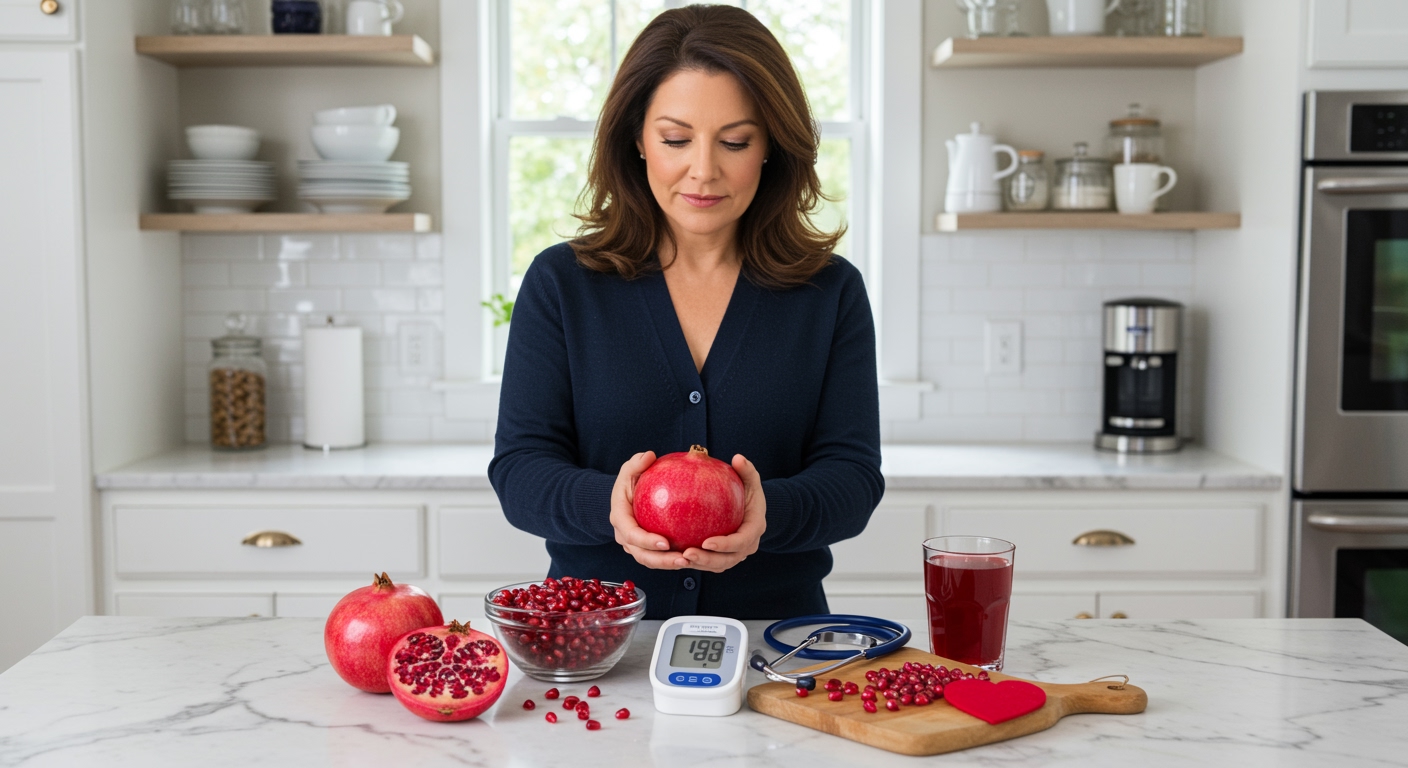✪ Key Takeaway: Pineapple may help raise low blood pressure through its potassium content and natural sugars that support circulation.
Introduction
Your blood pressure reading shows numbers lower than normal again.
You might be wondering if that sweet, tropical pineapple sitting in your kitchen could actually help boost those concerning low readings instead of lowering them further.
Hi, I’m Abdur, your nutrition coach and today I’m going to explain exactly how pineapple affects low blood pressure and whether this tropical fruit can be part of your natural management strategy.
What Happens When You Eat Pineapple With Low Blood Pressure?
Pineapple contains natural sugars that can provide a gentle boost to your blood pressure when levels drop too low.
The fruit delivers about 16 grams of natural sugars per cup, which your body quickly absorbs into the bloodstream.
This rapid sugar absorption causes your blood vessels to respond by maintaining better circulation patterns throughout your body.
Your heart receives signals to pump with slightly more force when blood sugar levels rise, which can help counter the effects of hypotension or abnormally low blood pressure.
The potassium content in pineapple also plays a crucial role by supporting proper muscle function in your heart and blood vessels.
Research shows that adequate potassium helps maintain the electrical signals that control your heartbeat and vascular tone.
✪ Fact: One cup of fresh pineapple provides 180mg of potassium, about 4% of your daily needs.
Does Pineapple Juice Work Better Than Fresh Fruit?
Fresh pineapple typically works better than juice for managing low blood pressure because it provides sustained energy release.
The fiber in whole pineapple slows down sugar absorption, preventing rapid spikes and crashes that could worsen blood pressure instability.
Pineapple juice delivers sugars much faster, which might cause a quick rise followed by a dramatic drop in both blood sugar and blood pressure.
Commercial pineapple juices often contain added sugars and preservatives that can create unpredictable effects on your cardiovascular system.
Fresh fruit also retains more of the beneficial compounds like bromelain, an enzyme that may support healthy circulation.
Bromelain helps reduce inflammation in blood vessels, which can improve overall circulation and support more stable blood pressure readings.
If you choose juice, limit yourself to small portions of 4-6 ounces and always select 100% pure varieties without added ingredients.
✪ Pro Tip: Eat fresh pineapple with a small amount of protein to further stabilize blood sugar and pressure.
When Should You Avoid Pineapple For Low Blood Pressure?
People taking blood pressure medications should consult their doctor before adding significant amounts of pineapple to their diet.
The fruit can interact with certain medications, particularly those that affect potassium levels in your body.
Individuals with diabetes need to monitor their response carefully because pineapple’s natural sugars can affect both blood sugar and blood pressure simultaneously.
If you experience severe hypotension with symptoms like dizziness, fainting, or chest pain, pineapple alone will not provide adequate emergency treatment.
People with kidney problems should limit pineapple intake because the potassium content might accumulate to dangerous levels in their system.
Those with gastric issues might find that pineapple’s acidity worsens their symptoms, which can indirectly affect blood pressure through stress responses.
✪ Note: Always seek immediate medical attention for severe low blood pressure symptoms regardless of dietary interventions.
How Much Pineapple Should You Eat For Low Blood Pressure?
A moderate serving of 1/2 to 1 cup of fresh pineapple daily can provide beneficial nutrients without overwhelming your system.
This amount delivers enough natural sugars and potassium to support circulation while avoiding excessive sugar intake.
Timing matters significantly when using pineapple for blood pressure support throughout your day.
Eating pineapple in the morning can help prevent the natural blood pressure dips that many people experience after waking up.
You can also use small portions as a strategic snack when you feel symptoms of low blood pressure developing.
Combining pineapple with other nutrient-dense foods like nuts or yogurt creates a more balanced approach to blood pressure management.
Monitor your individual response and adjust portions based on how your body reacts to different amounts over several weeks.
✪ Pro Tip: Keep a food and blood pressure diary to track how pineapple affects your individual readings.
The Bottom Line
Pineapple can be a helpful addition to your low blood pressure management strategy when used thoughtfully and in appropriate amounts.
Real nutrition success comes from understanding how individual foods work with your unique body, not from following generic advice that ignores your personal health situation.
I would love to hear about your experience with pineapple and blood pressure management, so please share your questions, results, or concerns in the comments below.
References
At NutritionCrown, we use quality and credible sources to ensure our content is accurate and trustworthy. Below are the sources referenced in creating this article:
- Blood Pressure Database: Can Pineapple Lower Blood Pressure
- Sprint Medical: Pineapple for High Blood Pressure
- WebMD: Pineapple Juice Health Benefits
- Manipal Hospitals: DASH Diet Foods to Lower Blood Pressure





